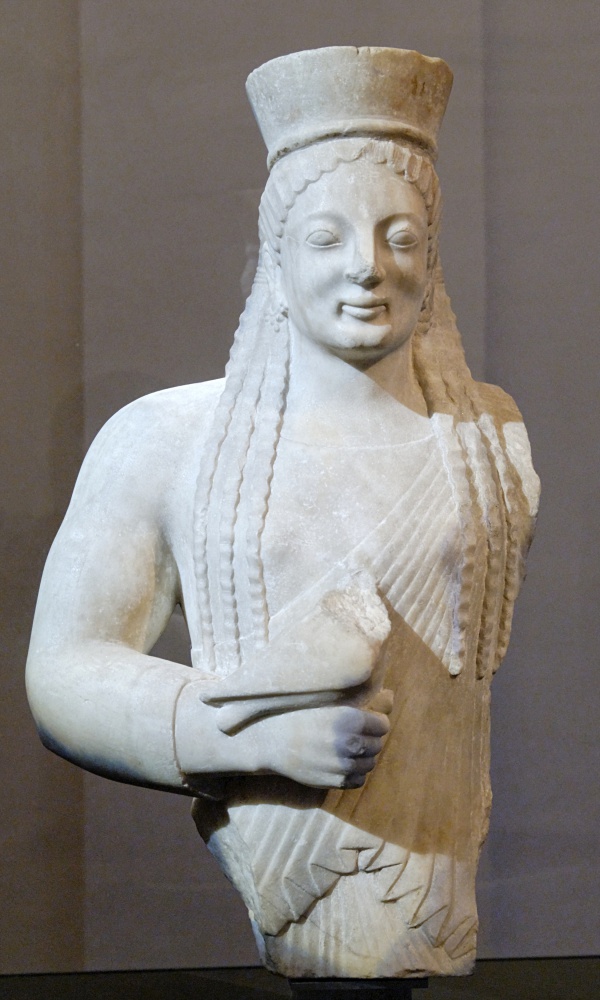Facts About Kore of Lyons
The Kore of Lyons is a captivating Greek statue crafted from Pentelic marble, depicting a young girl in the quintessential "kore" style. This ancient sculpture, estimated to date back to the 540s BC, is currently housed in the Musée des Beaux-Arts de Lyon in France. Notably, the statue is incomplete; its bust is in Lyon, while the lower portion and some arm fragments are preserved at the Acropolis Museum in Athens. It holds a distinguished place in the museum's antiquities collection.
The statue portrays a young woman holding what appears to be an offering, possibly a bird, close to her chest. She is adorned in a chiton and himation, traditional Greek garments, along with a polos (a type of headdress) and earrings. The style of the Kore of Lyons reflects a fusion of Ionian and Attic influences, attesting to the cultural exchanges of the period. Over the years, scholars have debated the statue's identity, proposing theories ranging from it being an Egyptian statue to an Ionian Aphrodite or even an Athena.
The Kore of Lyons' purpose has also sparked considerable discussion. Some suggest it might have served an architectural role as a caryatid (a sculpted female figure serving as an architectural support), while others believe it had a votive function, possibly offered as a gift to the gods. Its small size and specific features on the polos lend some support to the caryatid theory.
The statue's journey to France remains somewhat enigmatic, but it is thought to have arrived in the 17th century. Initially called the "Aphrodite of Marseille" it was later correctly identified as the Kore of Lyons after various fragments were connected. Significant research by Humfry Payne played a crucial role in reuniting these pieces, confirming the statue as one of the korai from the Acropolis of Athens.
Regarding restoration, the main fragment in Lyon was once complemented by casts of the Athens museum fragments until 1994. The Musée des Beaux-Arts de Lyon then decided to display only the original marble, while the Acropolis Museum continues to showcase the fragments along with a plaster cast of the upper portion.

 Germany
Germany